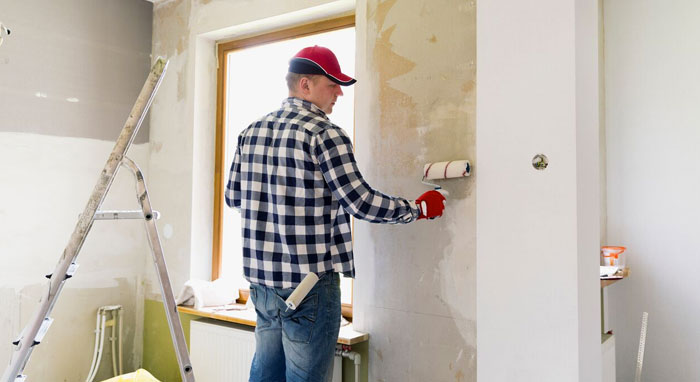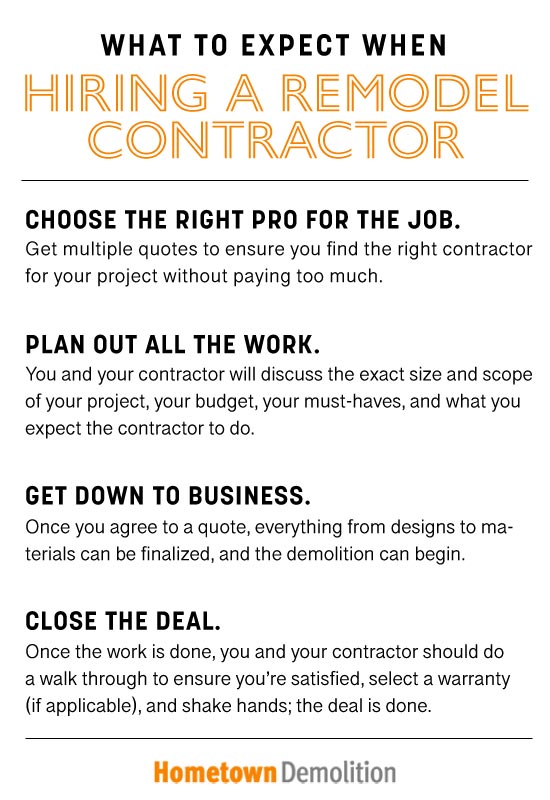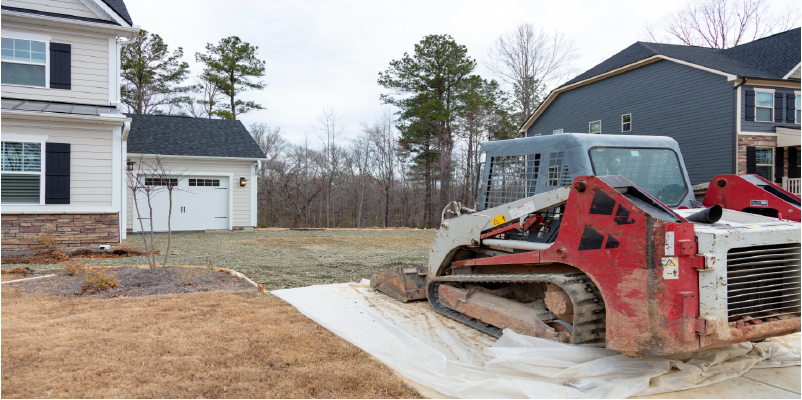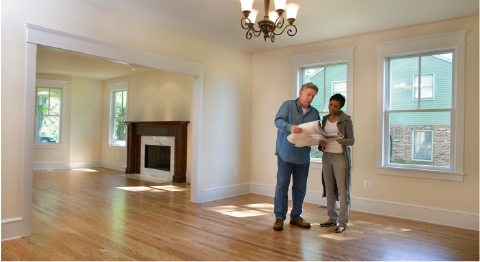
Updated November 16, 2021
A good remodeler can help turn your home into that of your dreams. That’s why choosing the right person for the job is the most important part of the remodeling process.
The custom building process is always unique to the work that’s being done, whether a kitchen remodel, bathroom remodel, or new home construction. This is why it’s so important to hire a contractor who is well-equipped to handle your specific project and timeline.
While each custom remodel or custom build is unique, the entire process—from choosing the right contractor to closing the door behind them when they’re done—can generally be broken down into four key phases.
Jump to:
- Research Contractors to Choose the Right One
- Plan the Work and Establish a Budget
- Contract and Build
- Close and Obtain a Warranty
Find remodelers near you

Research Contractors to Choose the Right One
First, you need to meet with multiple contractors to determine who is the right person for the job.
Once you get in touch with a contractor you’re interested in, they’ll get general ideas for the project from you, whether over the phone or in person.
After the contractor knows your project’s basic needs and design goals, they’ll be able to determine if they have the time and ability to meet your needs.
Then once you choose a contractor to move forward with, they’ll be able to get to work on the next phase.
Learn more about choosing the right person for the job:
- Never Say THIS to Your Contractor
- 7 Keys to Successfully Hiring a Demolition Contractor
- 13 Must-Ask Questions to Side-step Contractor Scams
- 2 Jobs, 1 Contractor: How to Save Money on Demolition Projects
Find remodelers near me
Plan the Work and Establish a Budget
This phase is when the contractor gathers more in-depth information about your project, like:
- Exact size and scope of project
- Client’s budget
- Customer’s must-haves (and their wants)
- What work exactly the contractor will do and in what order
Once the contractor has completed the initial discovery intake, they can begin concept design. The contractor will work on your detailed project plans and present them to you for adjustment and final sign-off before moving to the next phase.
Keep reading about project planning:
- Planning a Successful Demolition or Renovation Project
- Create a Home Remodeling Plan in 10 Simple Steps
- Save Money by Remodeling Your Kitchen or Bath This Winter
- Remodel Your Basement on a Budget (for $10,000 or Less!)
Contract and Build
This is the phase of the process when your contractor takes your dream and turns it into a reality.
This phase primarily consists of:
- Approving project design
- Finalizing cost
- Choosing materials and finishes
- Establishing timelines
- Signing contracts
- Demolition/Construction
Learn more about interior demolition:
- The Homeowner's Guide to Interior Demolition
- Interior Demolition Cost per Square Foot
- DIY Interior Demolition: Is It Really Worth It?
- Before You Start DIY Interior Demolition, Don’t Forget to Do This…
Close and Obtain a Warranty
The closing and warranty phase of the remodeling process includes three main activities:
1. Walking through to ensure you are satisfied with the work.
2. Selecting a warranty for the work (if available).
3. Closing the deal and enjoying your newly remodeled space.
Find remodelers in your hometown
Keep reading:


